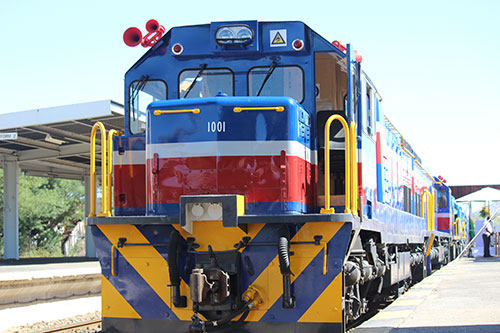Maihapa Ndjavera
The national rail service operator faces the dual challenge of an ageing and deteriorating railway infrastructure and outdated rolling stock.
The company, therefore, needs a whopping N$30 billion investment, which is almost half the national budget. “As the owner of the rail infrastructure, the government will need to at least invest N$30 billion into the infrastructure to get it on par with the Southern African Development Community (SADC) requirements. TransNamib as the rail operator needs N$2.6 billion to fund its business plan,” stated TransNamib’s spokesperson Abigail Raubenheimer.
Responding to questions from New Era, Raubenheimer said the state of the country’s railway infrastructure hampers operations, resulting in bottlenecks, and has the potential to cause derailments, which can lead to a loss of life, environmental harm, and damage to expensive equipment at any given time.
The poor condition of the track has necessitated that TransNamib implements a self-imposed and self-regulatory mandatory speed restriction on some sections of the network to mitigate derailments and accidents.
She pointed out that the national railway line network has over the years depreciated enormously, resulting in unacceptable speed restrictions.
Government has consistently pumped funds into railway development and upkeep. Late last year, transport minister John Mutorwa stated during a field trip to view the progress made on the Tsumeb-Kranzberg railway line that government has spent N$100 million per annum over the last decade on the rehabilitation of rails along the Walvis Bay-Kranzberg-Tsumeb line.
Furthermore, the organisation has been quite transparent in terms of its challenges with outdated rolling stock.
“The majority of locomotives are over 50 years old, while the lifespan of a locomotive is 25 years. We have done as much as we can, and pushed as much as possible with the current rolling stock. But in order to reach our plan of becoming a profitable company, we need rolling stock that is reliable and safe, hence the acquisition of rolling stock needs to be urgently addressed,” Raubenheimer observed.
On average, TransNamib has experienced four to five major derailments over the past five years, with three fatalities.
The company has since its inception not made a profit. During the 2010-2017 period alone, the company incurred accumulated losses amounting to over N$4 billion.
The spokesperson again highlighted the company’s dire need for investment to boost its capacity to generate revenue. Until the company is able to access funding, she noted, the trajectory of the company will remain as is.
According to the 2023-2026 estimate report from the finance ministry,
TransNamib was allocated nothing for the financial year under review, before getting N$50 million for the 2024/25 financial year. In an effort to bring TransNamib back on track to profitability, the company said it needed N$2.6 billion for a five-year business plan, which was launched in 2018.
This would hopefully allow it to reach break-even by the end of 2023. After four years of running around to source funding, the national rail operator in March 2022 announced that it finally secured a long-term loan of N$2.6 billion to implement its five-year business plan.
This plan is to enable TransNamib to get back on track to profitability, and plug its bleeding balance-sheet while stabilising revenue.
The State-owned rail operator managed to secure a long-term loan from the Development Bank of Southern Africa, in partnership with the Development Bank of Namibia.
The loan is to be used for the remanufacturing of rolling stock, acquisition of new rolling stock, modernisation of the workshop as well as
the upgrading of signalling equipment, including spare parts and associated equipment. -mndjavera@nepc.com.na


